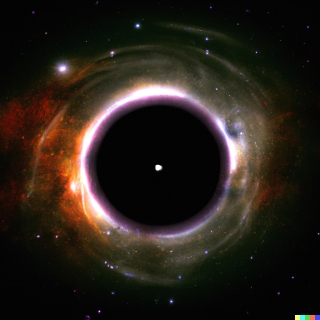
What is Black Hole
Black holes are one of the most mysterious and fascinating phenomena in the universe. They are incredibly dense regions of space where gravity is so strong that nothing, not even light, can escape. In this blog post, we will explore what black holes are, how they are formed, and some of the incredible properties that make them so unique.
What is a Black Hole?
A black hole is a region of space where the gravitational pull is so strong that nothing, not even light, can escape. This is due to the immense density of matter contained within the black hole. The boundary of a black hole, known as the event horizon, marks the point of no return, where anything that crosses it will be sucked into the black hole’s singularity, a point of infinite density and zero volume.
Read More
Formation of Black Holes
Black holes can be formed in a variety of ways, but the most common method is through the collapse of a massive star. When a star runs out of fuel, it can no longer generate the energy needed to counteract the force of gravity. As a result, the star begins to collapse in on itself, becoming increasingly dense.
As the star continues to collapse, its core becomes incredibly dense and hot, eventually reaching the point where it becomes a singularity. The outer layers of the star are then compressed into an incredibly small and dense region of space, creating a black hole.
Properties of Black Holes
Black holes have a number of unique properties that make them truly awe-inspiring. Here are just a few:
- Event Horizon: As mentioned earlier, the event horizon is the boundary of a black hole where nothing can escape. It is also known as the “point of no return.”
- Singularity: The singularity is the point at the centre of a black hole where the density and gravitational pull are infinite. It is a point of zero volume and infinite density.
- Spaghettification: As objects get closer to a black hole, they are stretched and elongated, creating a “spaghettified” appearance. This is due to the immense difference in gravitational pull between the front and back of the object.
- Time Dilation: Time moves slower in the vicinity of a black hole, meaning that time appears to pass more quickly for an observer outside the black hole than for someone inside.
- Supermassive Black Holes: These are black holes that are millions or even billions of times more massive than our sun. They are often found at the center of galaxies and are thought to play a crucial role in the formation and evolution of these galaxies.
Black Hole Detection
Black holes are incredibly difficult to detect, as they do not emit any light or radiation. However, scientists have developed a number of methods for detecting black holes, including:
- Gravitational lensing: This is the bending of light caused by the immense gravity of a black hole. By observing the distortion of light from distant stars, scientists can infer the presence of a black hole.
- X-ray observations: Black holes can emit X-rays as they consume matter. By studying the X-ray emissions of a specific region of space, scientists can infer the presence of a black hole.
- Spectral analysis: The motion of stars and planets around a black hole can reveal its presence. By studying the spectra of these objects, scientists can infer the presence of a black hole.
Conclusion
Black holes are mysterious and fascinating objects that have captured the imagination of scientists and the general public for decades. They are formed when a massive star dies and its core collapses in on itself, creating a point in space called a singularity.